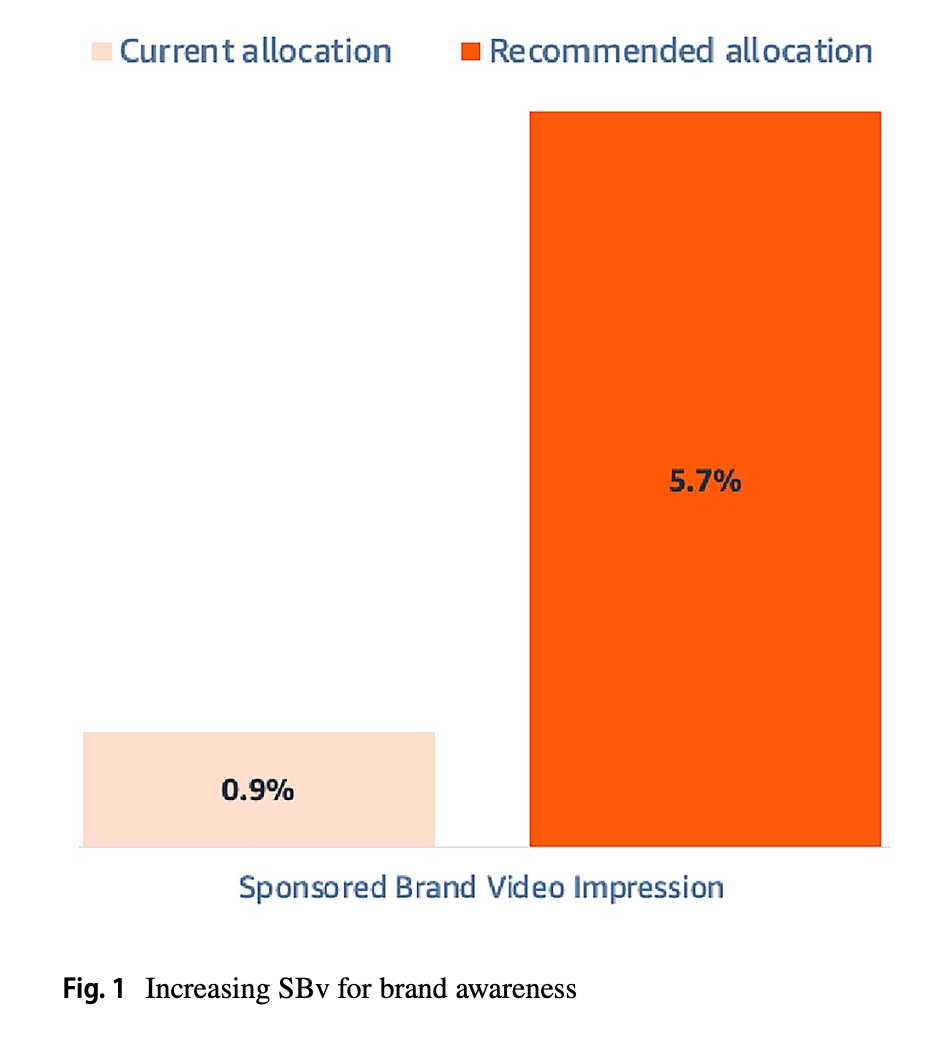How can you get the most out of your ad spend on Amazon? Most brands have some kind of model they use that’s based on their goals for their brand or product, and some concept of which ad types and targeting strategies play best in the marketing funnel. But clear answers from Amazon itself were hard to come by.
That’s why I’m excited to share insights from a fascinating research study conducted by Academic researchers actually employed by Amazon, using Amazon’s own data.
This research is groundbreaking for two reasons. First, it offers a rare peek behind the curtain of Amazon’s advertising algorithms. And second, it provides data-driven strategies that brands of all sizes can use to allocate their ad budgets effectively.
Surprisingly, I didn’t see this study get much visibility since it was published in March 2024, despite its potential to transform how brands approach retail media.
Today, we’ll dive into the actionable insights, focusing on what works best for small, medium, and large brands
Study overview
Let’s start with the big picture. The study was authored by a highly credentialed team, who were all employed at Amazon Ads at the time. The researchers included:
- Dr. Vivian Qin, team lead for data science within analytics and insights at Amazon Ads,
- Dr. Koen Pauwels, who served as Principal Research Scientist at Amazon Ads for 4.5 years (and is an excellent follow on LinkedIn, by the way), and
- Bo (Bobby) Zhou, an associate professor of marketing at the University of Maryland.
The study analyzed data from over 122,000 brands on Amazon, measuring the effectiveness of various ad formats and retail actions like reviews and discounts. The researchers broke this down by brand size—small, medium, and large—and by key metrics across the funnel: brand awareness, consideration, and revenue.
Here’s the 4 big findings that caught my attention.
1.Ad Products Aren’t Created Equal
Each ad format—Sponsored Brands (SBs), Sponsored Brands Video (SBv), Sponsored Display (SD), and Streaming TV (STV)—plays a unique role. For instance:
- SBv was the MVP. It boosted all three metrics: awareness, consideration, and revenue - specifically a 13% higher elasticity for brand revenue.
- STV and SD excelled at driving awareness, particularly for smaller brands.
- SBs—the classic Sponsored Brand ads—delivered consistent results for medium and large brands across the funnel.

2.Size Matters
The study revealed that a brand’s size significantly influences ad performance:
- Small Brands have the most to gain from upper-funnel ads like STV and SD. Small brands saw a 20% greater lift in awareness using Streaming TV (STV) ads compared to large brands. Perhaps coming off a lower base than large brands already saturating TV?
- Medium Brands should focus on SBv to drive consideration and revenue, as they’re typically already somewhat known.
- Large Brands benefit from doubling down on SBv and SBs, which reliably convert awareness into revenue.
3.Targeting Is King
Amazon’s advanced targeting tools can make or break your campaign. The study emphasized:
- Negative Keywords: Campaigns using negative keywords improved brand revenue by 2.5% and awareness by 3.2%, compared to campaigns that lacked this targeting feature.
- Geo-Targeting: Reaching specific audiences by location boosts all metrics.
- CTR Optimization: Campaigns optimized for click-through rates are particularly effective for driving consideration. Campaigns optimized for click-through rates (CTR) improved brand consideration by 18% compared to non-optimized campaigns, making CTR optimization one of the most effective strategies for moving customers through the mid-funnel.
4.Retail Actions Amplify Advertising
Advertising alone isn’t enough. The study highlighted three retail actions that significantly boost ad performance:
- Reviews: The number and recency of reviews directly impact brand metrics. A 1% increase in new reviews led to a 12.7% improvement in brand awareness and a 7.1% increase in revenue.
- Search Rank Optimization: Appearing on the first page of search results compounds the impact of your ad spend.
- Brand Awareness: Increased by 30.5% when moving from lower visibility to higher search ranks.
- Brand Consideration: Improved by 6.8%.
- Revenue: Increased by 7.4%, demonstrating the compounded effect of being more visible in search results.
Before investing heavily in ads, ensure your product listings are optimized. Think of it like this: Ads drive traffic, but great listings convert it.
Why This Study Is Game-Changing
So, why is this study such a big deal? For one, it’s unusual for Amazon to publish such detailed insights about their ad platform, beyond efforts to promote a specific ad type. This level of transparency gives brands a rare opportunity to refine their strategies based on Amazon’s own data.
But beyond that, the study confirms something we’ve long suspected: there’s no one-size-fits-all approach to Amazon advertising. Your strategy should be as dynamic as your brand’s goals and size.
Here's a link to the full research paper, 'Data‑driven budget allocation of retail media by ad product, funnel metric, and brand size' if you want to dive in further.





